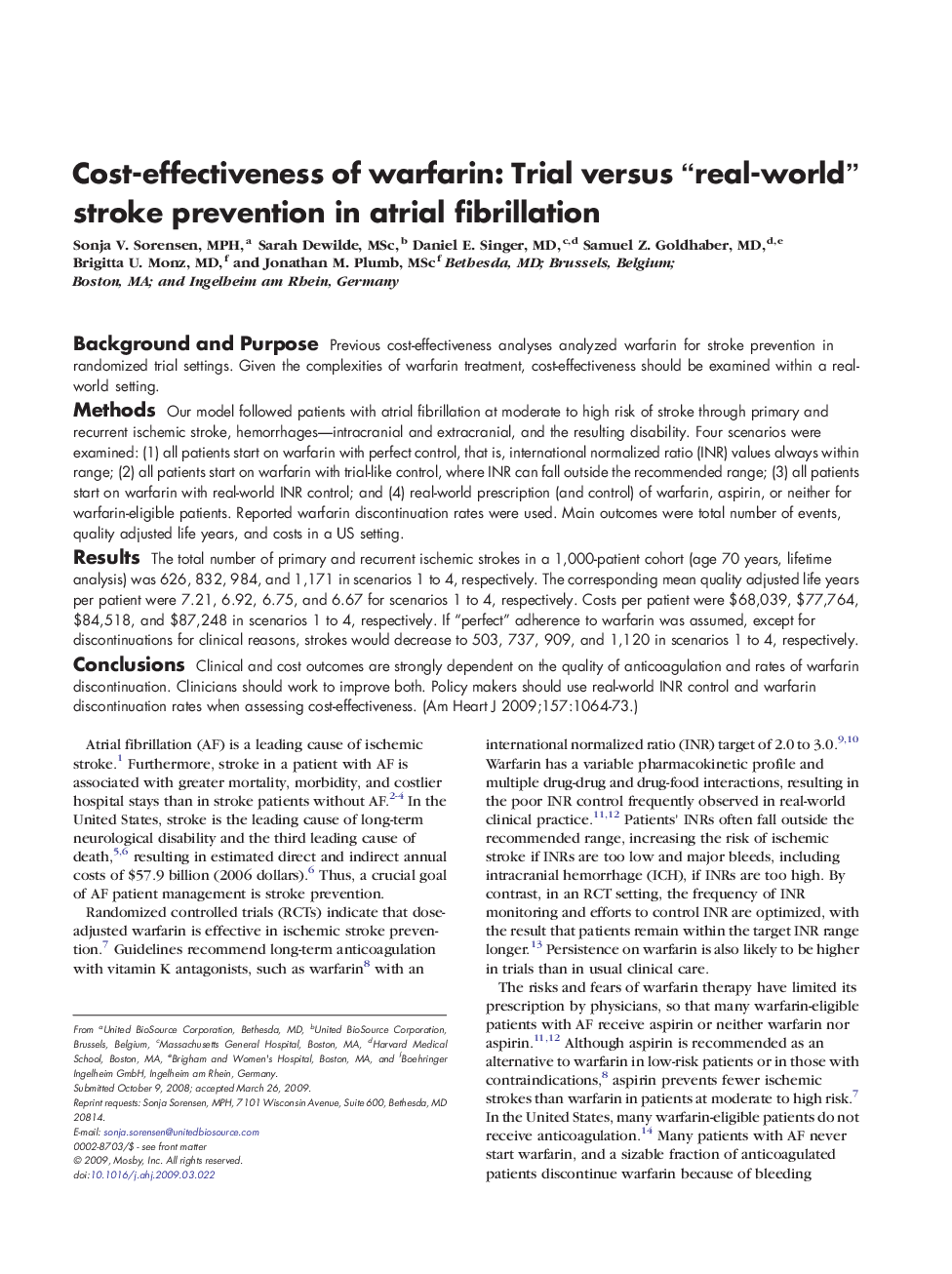| Article ID | Journal | Published Year | Pages | File Type |
|---|---|---|---|---|
| 2851261 | American Heart Journal | 2009 | 10 Pages |
Background and PurposePrevious cost-effectiveness analyses analyzed warfarin for stroke prevention in randomized trial settings. Given the complexities of warfarin treatment, cost-effectiveness should be examined within a real-world setting.MethodsOur model followed patients with atrial fibrillation at moderate to high risk of stroke through primary and recurrent ischemic stroke, hemorrhages—intracranial and extracranial, and the resulting disability. Four scenarios were examined: (1) all patients start on warfarin with perfect control, that is, international normalized ratio (INR) values always within range; (2) all patients start on warfarin with trial-like control, where INR can fall outside the recommended range; (3) all patients start on warfarin with real-world INR control; and (4) real-world prescription (and control) of warfarin, aspirin, or neither for warfarin-eligible patients. Reported warfarin discontinuation rates were used. Main outcomes were total number of events, quality adjusted life years, and costs in a US setting.ResultsThe total number of primary and recurrent ischemic strokes in a 1,000-patient cohort (age 70 years, lifetime analysis) was 626, 832, 984, and 1,171 in scenarios 1 to 4, respectively. The corresponding mean quality adjusted life years per patient were 7.21, 6.92, 6.75, and 6.67 for scenarios 1 to 4, respectively. Costs per patient were $68,039, $77,764, $84,518, and $87,248 in scenarios 1 to 4, respectively. If “perfect” adherence to warfarin was assumed, except for discontinuations for clinical reasons, strokes would decrease to 503, 737, 909, and 1,120 in scenarios 1 to 4, respectively.ConclusionsClinical and cost outcomes are strongly dependent on the quality of anticoagulation and rates of warfarin discontinuation. Clinicians should work to improve both. Policy makers should use real-world INR control and warfarin discontinuation rates when assessing cost-effectiveness.
